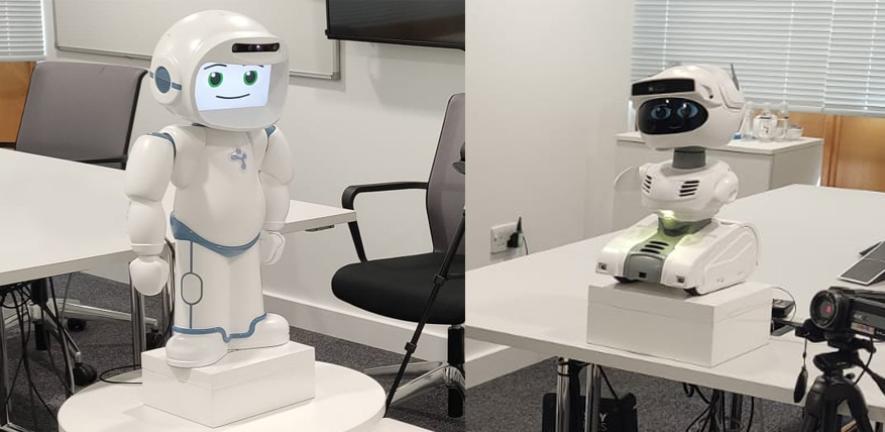As of today, robots still haven’t taken over, but they are finding work in a lot of sectors, including in health care.
And it turns out that if we want robots to help us help ourselves, they may need to be cute.
The University of Cambridge did a study about robotic wellbeing coaches.
The human participants would meet with the bots once a week for a kind of wellness session.
In all sessions, the robotic coaches had the same programming, the same script, and the same voice: they would give humans wellness-related prompts, like asking them to describe a positive experience, or to talk about something or someone that made them feel grateful.
The only difference was the external appearance of the robots.
Some people met with QTRobot, a 3 foot tall bot that was kind of human-shaped.
Others met with Misty, a shorter machine that looked more like a toy.
In the feedback on the sessions, the people who had met with toy-like Misty felt they had more of a connection with their coach than the ones who had met with the more humanoid QT.
The researchers think this might be because of our expectations in meeting with the robots.
When we see a human-shaped bot, we may think it’s really advanced and intelligent.
But, of course, artificial intelligence is still a big work in progress.
But when we see a robot that looks like a toy, we may expect less of it, and so we’re less likely to feel let down afterward.
Even if we don’t know the exact reason, the study shows appearances do matter when it comes to robots.
And here’s why that matters.
There’s a shortage of trained mental health practitioners and ongoing high demand for mental health care.
Proponents are hoping artificial intelligence tools like these robots can help fill some of that gap.
But part of that means making people as comfortable with the robots as possible.
So, maybe they should just make all the wellness bots look like Baby Yoda.
Classic cappuccino, meet the space cup. ☕🤝
This demo shows the Capillary Beverage investigation which studies the process of drinking from specially designed Space Cups that use fluid dynamics to mimic the effect of gravity. https://t.co/xFGFTva2Bw pic.twitter.com/M7TQmIwlrC
— ISS Research (@ISS_Research) March 2, 2023
Astronauts in orbit typically drink using straws and pouches.
But now, NASA has developed a “space cup” which will hold liquids even without a lid!
Its unusual shape uses the properties of fluid dynamics to keep the drinks sticking to the cup’s surfaces instead of spilling out into the space station.
Robots can help improve mental wellbeing at work – as long as they look right (University of Cambridge)
NASA’s sci-fi space cup holds a drink without gravity (Mashable)

